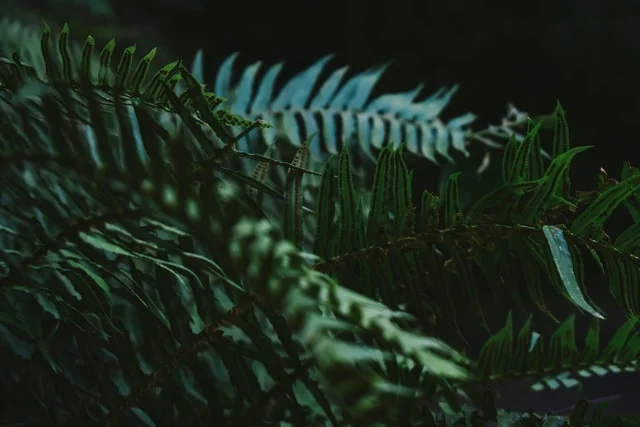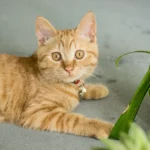Table of Contents
Introduction
The Plumosa Fern often called the Asparagus Fern is actually a climber, and often grows in pots and hanging baskets. It has feathery leaves and thorny stems.
The leaves give the Plumosa Fern a light lacy appearance. It has tiny white flowers in Spring followed by small black-berries and will grow well outdoors in many climates, growing best in a lightly shaded position.
It really only requires minimal care so it is a good plant for the first-time gardener.
How to Care for Plumosa Fern
Keep your plant moist, and in a slightly shaded spot. It prefers well-drained soil. If you have your plant indoors, keep a spray bottle of water handy to mist the leaves.
Hanging baskets of Plumosa Fern look very cool and pretty in a conservatory, sunroom area, as the plant will trail down over the sides of the basket. Your plant will thrive in average room temperatures ( not too hot).
What Does your Plumosa Fern Require?
Light Requirements for Plumosa Fern
Either inside the house not in direct sunlight or outside in a slightly shaded sheltered position, no frost. Your plant will require regular watering.
If you have very cold winters, your plant will probably die off and return in Summer.
Temperature Requirements
We have established that the plant does not like to get really cold, but it does not thrive in extreme heat either but does favor high humidity.
The plant is able to tolerate full sun for a period of time, but this causes the foliage to turn yellow and doesn’t look nice.
Soil Requirements
Plant in well-drained soil, give your fern a dose of Epsom Salts as liquid fertilizer, this will make the leaves a richer shade of green ( due to the magnesium content of the product) This works particularly well indoors, making your plants appear really healthy and glossy.
Humidity Requirements
If you have an indoor Plumosa Fern give it one to two inches of water per week. If you have your plant in lighter more sandy soil it will require more water.
Keep misting the leaves in between watering to keep the humidity content higher.
How to Water your Plumosa Fern
If you can, take your plant outside once a week, and hose the whole plant down. This removes any dust from the leaves, that has lodged there, and will keep it much cleaner looking.
If you can’t take the plant outside keep misting the leaves with the spray. Check your plant to ensure it is always a bit moist.
How to Fertilize your Plumosa Fern
If your fern becomes yellow, you may be giving it too much fertilizer. In Spring only, give it some indoor plant fertilizer. If it is an outdoor plant compost and mulch will keep it moist and prevent overwatering. Try the Epsom Salts to green it up again.
Pests and Diseases Common to the Plumosa Fern
Your fern will seldom be attacked, and this makes it a great plant to have in the house and garden. If it is inside give a spray with good quality Pest Oil annually.
Be aware that the Plumosa Fern is toxic to dogs and cats, the cat won’t chew it but the dog might. If this happens you need to take your animal to the vet as ingesting it will cause extreme gastric symptoms in an animal.
Pruning Your Plumosa Fern
Trim back your Plumosa Fern wearing gardening gloves, as the plant can cause slight skin irritation, and is also thorny,
Any dead wood should be cut away, and this will encourage new growth. Keep the humidity levels high in the house to prevent your plant from dying.
Propagation of Plumosa Fern
You can propagate your Plumosa Fern in a couple of different ways.
- Divide the plant in the pot, replant divided part, pot, keep moist and wait for roots to form.
- New ferns can be grown from bulbils.
- Larger numbers using spores. These are found on the underside of the fronds if outside will propagate by themselves in damp conditions.
- Propagation takes place between March and July when the air is warm, but not overhot.
- Use a good compost for propagation 50/50 John Innes seed compost and peat, sterilize the pot first.
- Sometimes you can propagate a fern from a cutting.
Some Facts about Plumosa Fern
- The berries are toxic, don’t eat them.
- They are a very low maintenance plant, I have never seen a pest attack them.
- The best fertilizer for them is Epsom Salts, as the plant responds well to high levels of Magnesium.
- Your Plumosa Fern is an evergreen plant.
- It will grow really well both inside and outside.
- Indoor plants help to purify the air through photosynthesis.
- Sometimes used in floral arrangements when no other greenery available.
- When in the garden, they look better if densely planted.
Life Span of the Plumosa Fern
You can cut your fern back to the base, when necessary to generate new growth. Every couple of years it may look a bit untidy and this will keep it tidy.
Plumosa Ferns have two stages in their life-cycle. The first stage is spores, and in the second stage, the leaves unfurl and grow. Because your fern is a hardy plant it should live for many years in the garden.
Growing Your Plumosa Fern
If you live in the right climate zone, and you don’t grow much else, you can always grow a Plumosa Fern, along with a few other simple ferns for contrast in greenery.
Some people water their indoor plants with warm water, as it is said to be better for them, but this is not scientifically based.
Conclusion
If you have your Plumosa Ferns indoors, have a few in pots and a few hanging in baskets. This way you have a collection of greenery that you can move around.
Many people garden totally within their apartment, and still manage to have some lovely plants.
Plumosa Fern is ideal for this purpose as the feathery leaves give a softening look to indoor furnishings and are restful to look at creating a relaxing environment.
Photo by Jake Weirick on Unsplash



